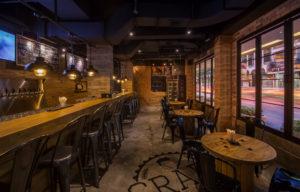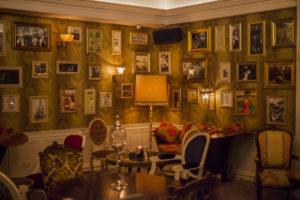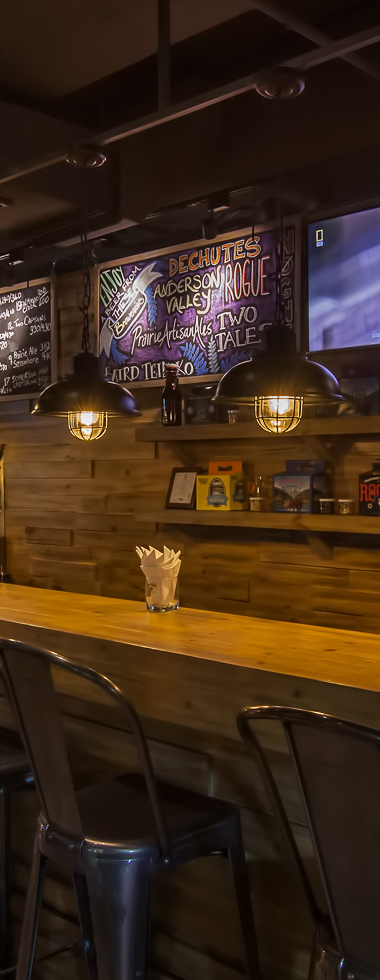The uninitiated might miss the entrance to Employees Only (EO), billed as a cocktail bar and speakeasy, in Hong Kong’s Lan Kwai Fong area. It is deliberately downplayed – its initials worked out like a secret code on the marquee, a neon sign that can be glimpsed through a curtained window, no more than a saucy wink to knowing patrons.
Inside, the rounded out corners of the recessed ceiling and mirror frame, together with the Emeco chairs surrounding the upholstered banquettes and the aluminum-edged tables suggest American diner, but the woodsy flour and walls, plush red drapes, and dim lighting bring it a few notches higher.
Meanwhile, at Craft in Bangkok’s Sukhumvit Soi 23, Tolix chairs blend with the rough-hewn surroundings with exposed ducts overhead, cement floor underfoot, and cable spool tables everywhere. Roughly a shed, it is the looser version of its more uppish sister establishment, Whisgars (whisky + cigars), next door.

But at Belle’s Room, a cocktail bar wedged between Craft and Whisgars, Victoriana has been appropriated to create an intimate salon. The patterned wallpaper is layered with mirrors in ornate frames, old clocks, and cameo portraits lit up by a handful of wall sconces.

It’s not easy to imagine all these coming from one design company but they do. The works of iThink Consulting Group have been turning heads since Mr. Florian Sander the designer behind CRAFT and playlab founded it in 2009. Established as a hospitality consultancy focused on research and feasibility, iThink has since evolved into designing turnkey hospitality solutions, providing end-to-end services for new projects from research to concept development, interior design, project management and marketing.
Besides F&B outlets, Mr. Sander has developed well-defined theories about hospitality design that have informed iThink’s projects in the sector. The group recently reconfigured Ann Siang House in Singapore into an extended-stay accommodation, where Mr. Sander reworked the in-room amenities, added new common areas, and introduced a bold new façade. iThink also completed the transformation of 55 Keong Saik Road, a row of 10 shophouses, into a 61-room boutique hotel.
“Hospitality design encompasses the conception of service-oriented projects like hotels, bars, restaurants, lounges, and cafes,” says Mr. Sander. “At iThink, we pride ourselves in selecting exciting and unique projects that depart from traditional hospitality design projects. Today, our portfolio spans from heritage boutique hotels and speakeasy bars to kids entertainment centers and retail concepts.”
According to Mr. Sander, every hospitality project rests on four fundamentals: Business aspect, operations, customer experience and design. “In our philosophy, each of these fundamentals must not only be well executed but also complement each other. Thus, the way we approach hospitality design culminates in a holistic concept for the owner, the operator and their patrons.”
iThink prioritizes complementing the primary offering as opposed to overpowering it. As a result, its designs vary and adapt in a unique way for each of its project as no two projects are the same. At its inception, the company was purely an advisory outfit, delivering anything from business planning and research to feasibility studies. Today, this side of the business has become a smaller cog in the bigger clockwork of our turnkey concept and design company.
“iThink’s philosophy is that of transformational design: We believe that large, open F&B concepts are a thing of the past. The spaces we create arc smaller, nimbler, with curves and corners, and are able to accommodate specific evolving business demands.”
“Flexibility for the operator is a key aspect to our products. We also aim to create projects that offer clusters of F&B tenants so guests can access a wide range of experiences within the same space.”
Mr. Sander emphasizes how design reflects human behavior. “It is human nature to want to be taken care of desiring nurture and creature comforts is part of human experience. Every day, people are making choices, some conscious, some unconscious, but all of them are a reflection of who we are and what we like. There are various approaches to hospitality design out in the market. Ours is one where we try to envision the final product at its completion: how customers are entering the premises, what they see, where they sit, how they feel, etc. Only after thinking through the entire project do we consider our design approach.”
Important external developments are also shaping hospitality design. “One of the things we’ve noticed is that people move away from static places. We believe in transformational designs as well as flexibility for the operators of our projects. When business is slow, customers can experience a smaller, more intimate space: when business demands it, operators have hidden corners, niches and areas to open to guests. Thus we are aiming to adapt our designs not only to the operator’s peak days, but also to our customers desire to always have a cozy experience in our venues.”
iThink holds the view that hospitality is about people, but does apply technology where it believes it adds value. “Recently, we created a kids club franchise called playlab where we use cutting edge technologies such as movement-based projector technology, interactive white boards, online libraries and VR mixed with ‘Old School’, more traditional educational materials. Kids love it and it is a perfect combination of old and new.”
Mr. Sander acknowledges the push towards automation and understands how some businesses “franchises and any other cookie-cutter operations” can benefit from such systems. “In our line of clients, the more successful operators adjust the ambience of their operations depending on the mood and crowd, playing wilh lighting, music and entertainment as they understand that moments have to be created, not automated. The evolution of lighting has definitely been a contributing factor to our projects as the lighting tones and intensities have advanced significantly, allowing us to create an intimate mood in all of our venues.”
In the future, Mr. Sander believes that there will be a push for technology. “Something we will see very soon will be augmented reality menus where you can see food preparation as well as the finished dish on your phone.
“I further believe that over the next decade, we will see futuristic product offerings such as wire-free charging capabilities inside hotels, coffee shops and public areas where gadgets can be automatically charged via Wi-Fi, and you will never need to worry about bringing all your chargers for your watch, phone, tablet and laptop.”

 PORTFOLIO
PORTFOLIO